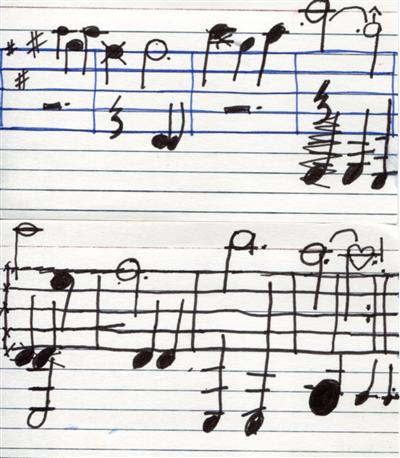Monday: M had her private lesson today. As we walked to the car, she said, “Yay, we don’t have to practice today.” Sigh.
At her lesson, M played Meadow Minuet all the way through with her teacher playing the accompaniment. Man, that’s a busy accompaniment! I had a hard time hearing M’s part. But M soldiered through, playing a number of repetitions and improving each time. [Later, I will post some audio.]
Musically, her teacher taught M to introduce a ritard plus a fermata, and then a return a tempo, in the middle of the D section, leading up to the C# on the 9th fret of string 1. M did a nice job.
Her teacher suggested we work on the closed A scale to get ready for book 2. (We have already worked on this scale in the past.)
On the non-guitar-related front, I have decided to more actively develop both M’s voice and my own in the following ways:
- For M, I recently bought Voice Lessons to Go for Kids. We listened to the CD this weekend, on the way to the beach, and the whole family (me, M, and S) sang along. My first impression: the instructional content is solid, but the presentation is pretty dry. M was game for it the first time I played it, but since then, she has said she doesn’t want to listen to the CD.
- For me, I recently bought Harmony Singing By Ear by Susan Anders. I am loving this! The instructor proceeds in sensible steps, her presentation is clear, the production is good, and the songs are lovely. I’ve listened and sang along a few times with M in the car, and I could hear her sometimes singing along from the back seat. I can’t think of a better way to introduce basic chord-building theory than using these CDs. I will probably review them more thoroughly later. You need a reasonably good ear and ability to match pitches to use the CDs, but you don’t otherwise need a lot of singing ability.
